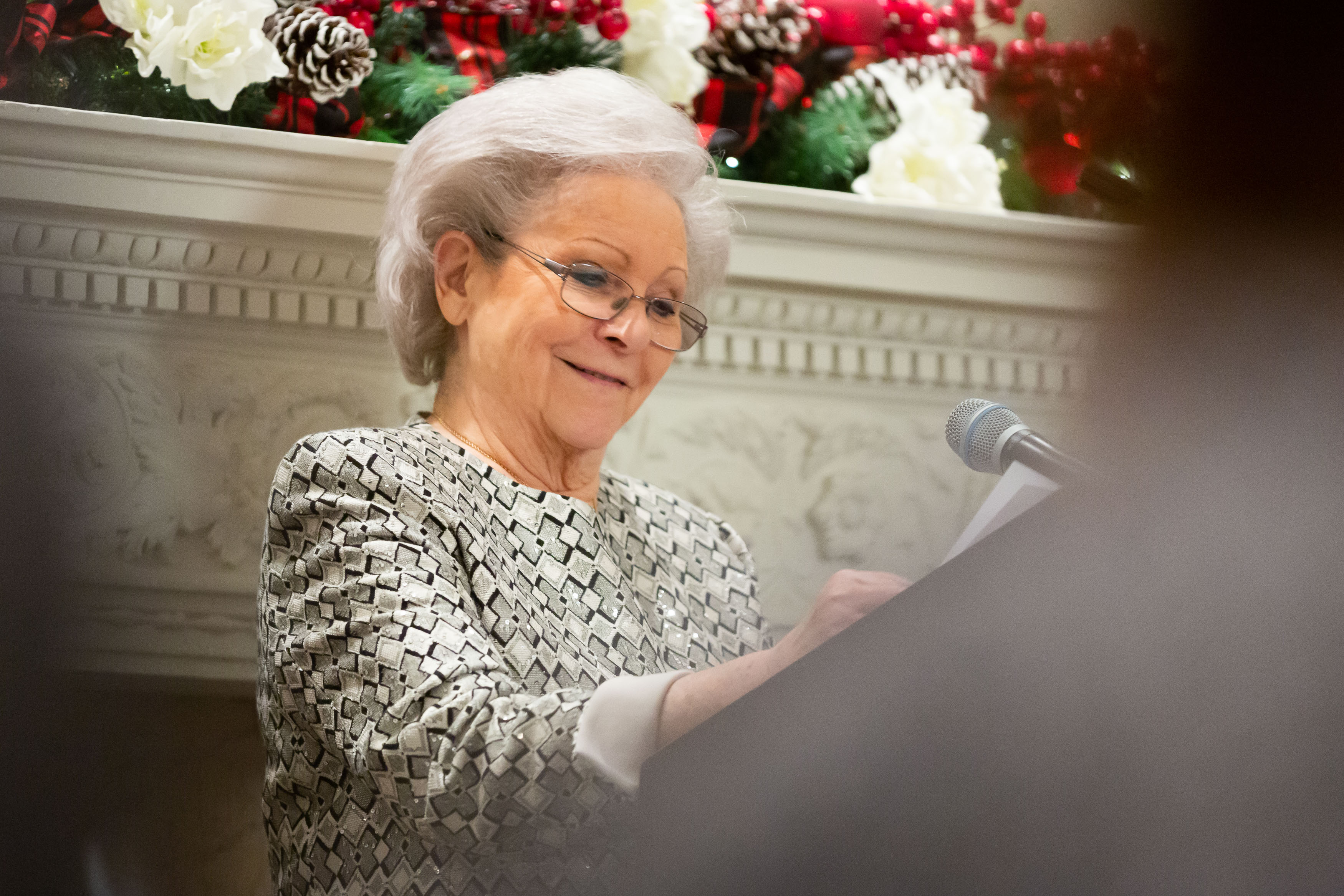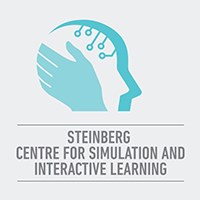Dr. Robert Sweet is the principal investigator of numerous research and development projects that bring simulation science to the forefront. As the Executive Director of the Washington Wyoming Alaska Montana Idaho (WWAMI) Institute for Simulation in Healthcare (WISH) and the University of Washington Center for Research in Education and Simulation Technologies (CREST), he is leading the next generation of healthcare simulation tools.
Dr. Sweet recently visited McGill thanks to the generosity of the Flanders Family Visiting Professorship, a unique opportunity to bring in people from various backgrounds to share their expertise in medical simulation. His visit began with a presentation at the Combined Surgical and Anesthesia Grand Rounds.
“One of the things we often say about education is that it’s not always about the technology,” explained Dr. Kevin Lachapelle, Interim Executive Director of the Steinberg Centre for Simulation and Interactive Learning (SCSIL). “But sometimes, it is all about the technology. There are a lot of things that we can’t do because the technology simply isn’t there. Dr. Sweet will share some of the advances that his team has been able to bring to the field.”
Achieving expert competency
“Healthcare is a high-stakes profession,” emphasized Dr. Sweet. “We have the responsibility of other people’s lives in our hands. Are we prepared? Do we have the knowledge and skills to handle complex procedures? What is it that we are ready to do, with our teams and with the infrastructure around us? Is there good decision-making, communication and technical skills?”
Medical errors represents the third leading cause of death in the US, and simulation is one of the solutions that we can use to address this issue. According to Dr. Sweet, while we have good means of assessment for basic technical skills, we don’t have a really good simulation system when it comes to complex surgical procedures, other than practicing on real people. However, the new technology simulation platform that he is leading may change that…
Creation of the Advanced Modular Manikin for Healthcare Simulation Training
Funded by the US Department of Defense, Dr. Sweet introduced the Advanced Modular Manikin™ (AMM) open source/standards simulation platform that provides the ability to link training modules to a common physiology engine and each other, essentially “crowd-sourcing” healthcare simulation development, and making the promise of full patient simulation a reality.
Dr. Sweet and his team at UW CREST have created male and female anatomical data sets taken from CT, MRI, body casting and laser scanned subjects, with body segments that can be swapped. AMM core source code is used to communicate across the system, and a universal connector allows the modules to easily connect and disconnect, providing data, power, fluid and air. The platform has an integrated open source physiology engine and has successfully integrated modules from various vendors, and it can work with virtual reality and physical models. The goal is to create a standardized blueprint for developing segmented body parts that can universally join together, forming one multi-purpose manikin to fit the needs of any desired scenario.
With the AMM, changes in physiology happen automatically and the patient responds accordingly; you don’t need a technician to make this happen behind the curtain by pushing a button. For example, skin modules may change colour with light and temperature to represent the states of the patient with external stimuli.
Dr. Sweet explains that one of the greatest technology challenges is understanding how tissues behave. His research involves increasing the fidelity, usability and application of synthetic and virtual models through the definition of accurate tissue properties and development of tissue analogues with embedded sensors.
This project represents a big shift in our capabilities in using simulation in healthcare. The American College of Surgeons is field testing the AMM platform and will be launching shortly.
Jake Barralet, Director of Innovation for the Faculty of Medicine and the Steinberg Centre for Simulation and Interactive Learning, remarked, “I think this universal system is pretty amazing. The open source model means that anyone can start working on it and contribute. It looks like the future to me.”
Watch Dr. Sweet’s presentation at the McGill University Combined Surgical and Anesthesia Grand Rounds:
It’s Alive! Creation of the Advanced Modular Manikin for Healthcare Simulation Training
For more information on the Advanced Modular Manikin™, please visit: https://www.advancedmodularmanikin.com/
Emerging Technology for Simulation and Education
Later that afternoon, Dr. Sweet took part in a two-hour presentation and panel discussion with fellow experts who shared their views on the future of simulation and medical education.
The very stimulating day concluded with a festive dinner hosted by Mrs. Kappy Flanders to celebrate the evolution of the Steinberg Centre, including the announcement of Dr. Gerald Fried as the new incoming Director effective January 1, 2020, and to highlight Dr. Robert Sweet’s visit and the importance of coming together to share our knowledge. As she explains, “…simulation is not just for medicine, but for all types of learning: simulation changes how people are taught, and in turn, it revolutionizes how people learn. We all learn differently, and simulation is yet another way of teaching, and learning. There are always great discoveries, great theories, and great ideas – but if they are not taught, not transmitted to the next generation, they are lost.”



Photos by Joni Dufour and Owen Egan

